The board is a good old acquaintance and comes directly from Nvidia. This in turn confirms that it is simply an unchanged reference design. This certainly has upfront and night parts, but saves costs first. We'll see in more detail what has changed to the board of the GeForce GTX 1080 Ti Founders Edition from our launch review.
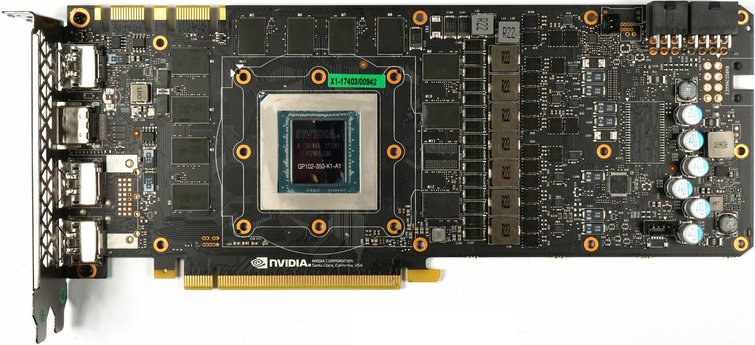
Power supply of the GPU with load balancer
As with Nvidia's reference design, you rely on an uP9511 from UPI Semiconductor. This is a modern multi-phase Synchronous Buck controller that can regulate up to 8 phases simultaneously and supports three operating modes using PSI (Integrated Energy Saving Interface): (a) all phases at full load, (b) dynamic phase count/distribution at partial loads, and (c) the use of one or only a few phases for low loads (up to idle).
With this controller, load balancing can also be implemented quite advantageously. Things like OpenVReg 4+ are of course also part of the feature list of the controller. The eight occupied outputs then control an LM53603 (Single Channel Buck Converter) as a kind of driver. But why are all eight outputs occupied when there are only seven phases in total?
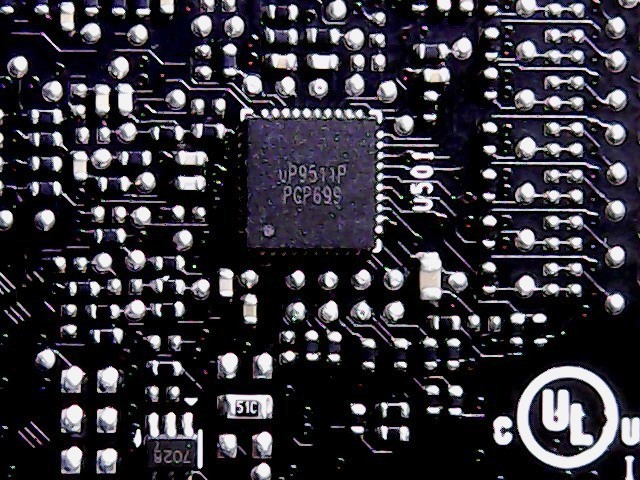 |
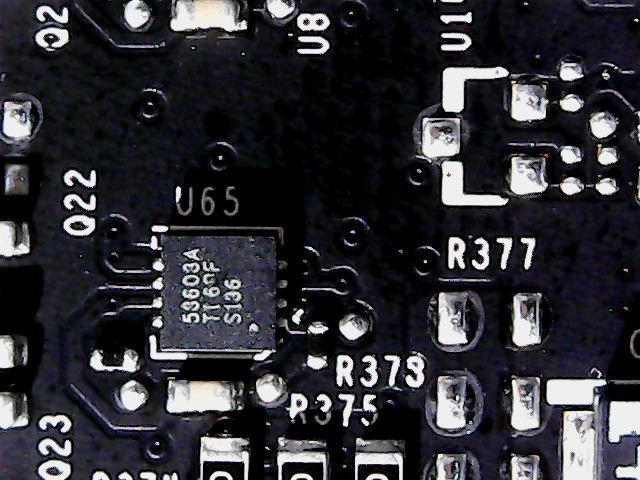 |
Shared suffering is half suffering. If you take a closer look, you will discover a total of seven phases in the power supply for the GPU, but the middle one, in contrast to the other six, is controlled by two VRM pairs each. But how does this actually work with the seven phases and the eight control circuits, because the PWM controller is known to have a total of eight outputs connected and not just seven? The solution is called load balancing and is exactly what can ensure that the motherboard connection is not overloaded!
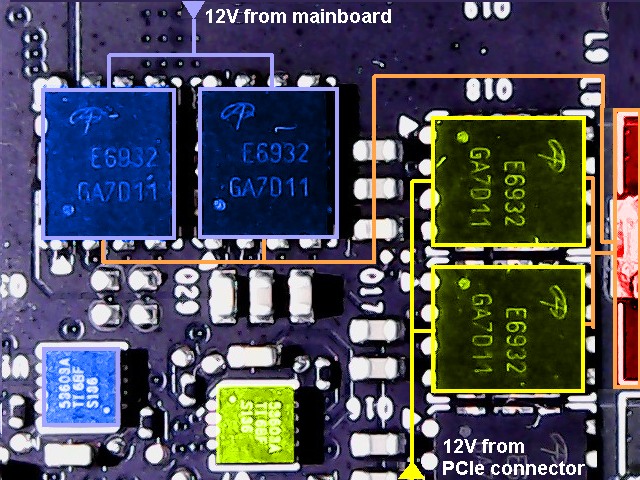
Let's look at the above image and the feeding middle phase. It has two feeding points and thus also two voltage transformer circuits separately controlled from each other. The right one (marked in yellow) is also supplied by the PCI Express connector, while the left connector (marked light blue) is powered by the motherboard slot. Depending on the load, the middle phase can be fed in variable proportions of both supply rails, which excludes overloading of the motherboard slot!
Each of the seven GPU control circuits is realized via two parallel AOE6930 se————————————————————– These chips are Dual Asymmetric N-Channel AlphaMOS, which combine the MOSFET of the high and low sides together with the Schottky diode in a common package. The fact that one pair is used per phase is used to reduce utilization and hotspots. But here one differs from Nvidia's reference board, because simpler components are used.
The inductors used with 220 nH are common mass-produced goods for machine assembly, as they can also be found on the reference design and can handle more than 100 amperes if they should be. However, they do not match the quality of the higher-quality Coiltronics products (Cooper Bussman).
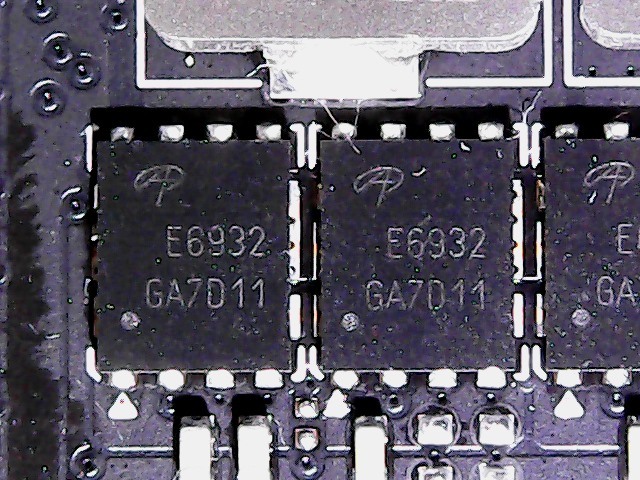 |
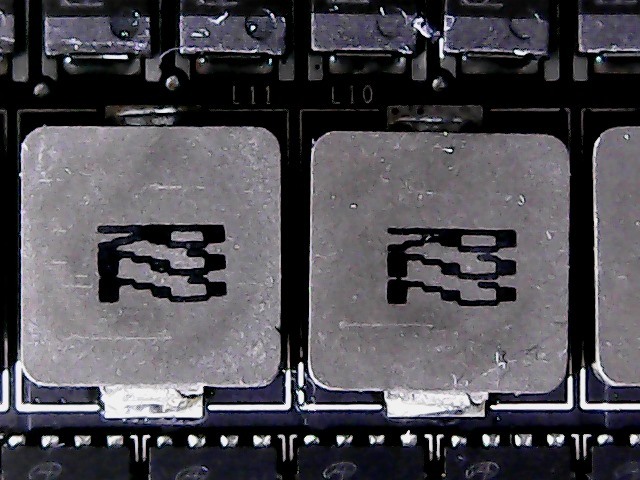 |
Power supply of the memory and other components
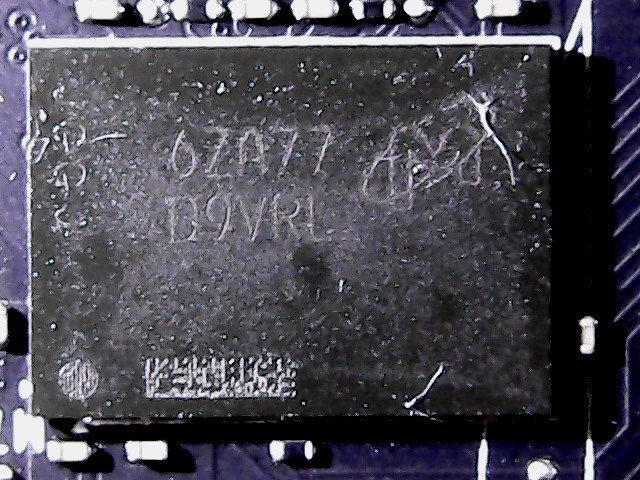
A total of 11 of the G5X-Micron modules of type MT58K256M321-Ja110, which offer up to 11 GByte/s and are therefore intended to compensate the missing 32 bits of the memory interface with a higher clock speed of 5500 MHz (effectively), are installed on this card. We are somewhat surprised that Nvidia does not immediately install the MT58K256M321-Ja120, which clocks a little higher. After all, the board partners buy the GPU and the memory in the bundle from Nvidia, which leaves little room for manoeuvre.
The memory is powered by two phases controlled by an uP1660. Here, too, an LM53603 and the two parallel AOE6930 from Alpha & Omega Semiconductor are used for each phase. However, nothing changes in terms of basic interconnection. The power is supplied exclusively via the motherboard slot.
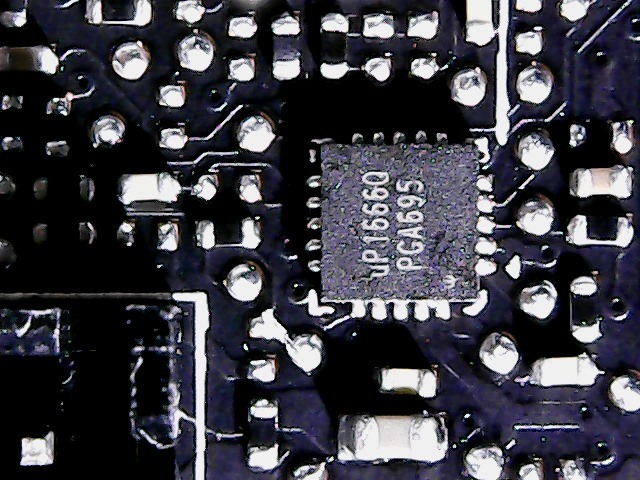 |
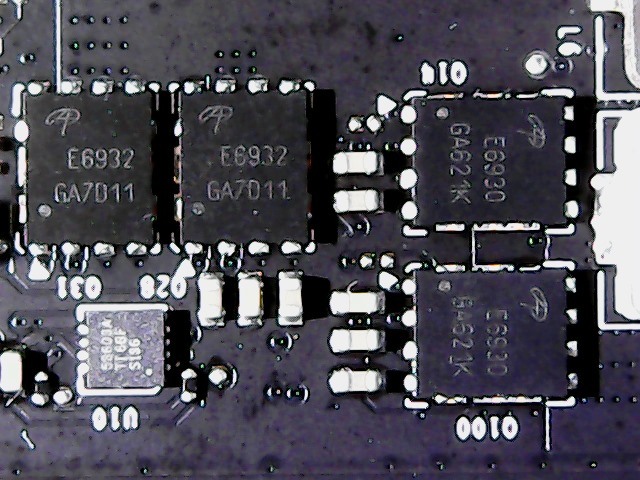 |
It is interesting to bet on two smaller coils, which offer only 220 nH inductance instead of the otherwise often used 330 nH. Since the flowing currents are significantly lower, coils can also be used for lower currents, which significantly reduce the space requirement. A single EPROM chip Winbond 25Q40E is used for the BIOS.
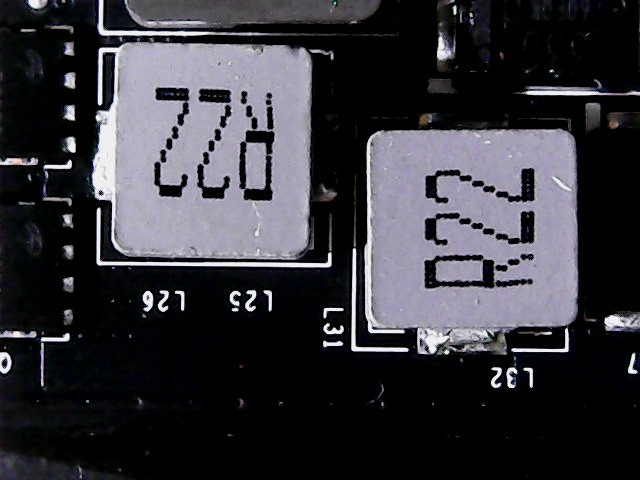 |
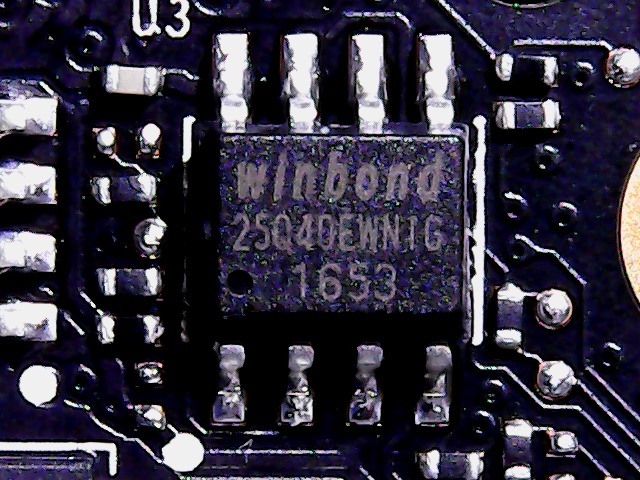 |
A class-standard INA3221 is responsible as a monitoring chip for the input flowing currents and adjacent voltages. A total of two shunts for the two 12V supply phases (mainboard slot, PCI express socket) each help to determine the currents flowing from there via the resulting voltage drop.
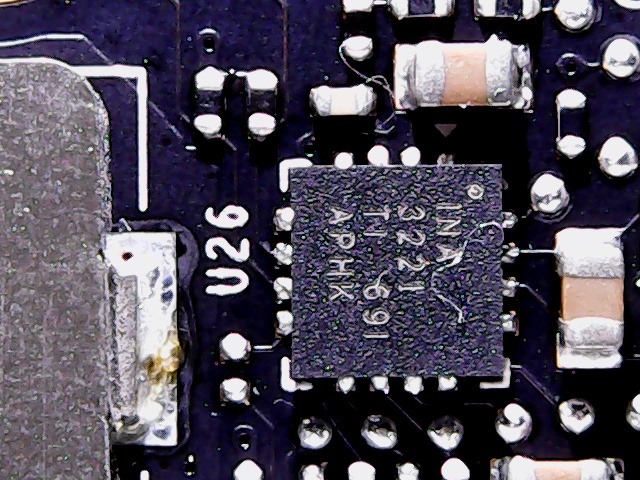 |
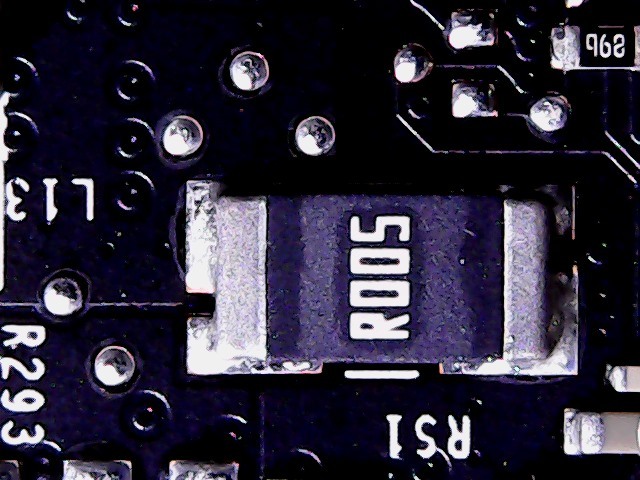 |
What we have seen is the fact that the VRM is now relying on AOE6930 from Alpha & Omega Semiconductor instead of the Fairchild D424, but otherwise there are hardly any changes. Since the board is labeled with Nvidia, it should be a component change by Nvidia and not an adjustment by Galax / KFA2.
































Kommentieren